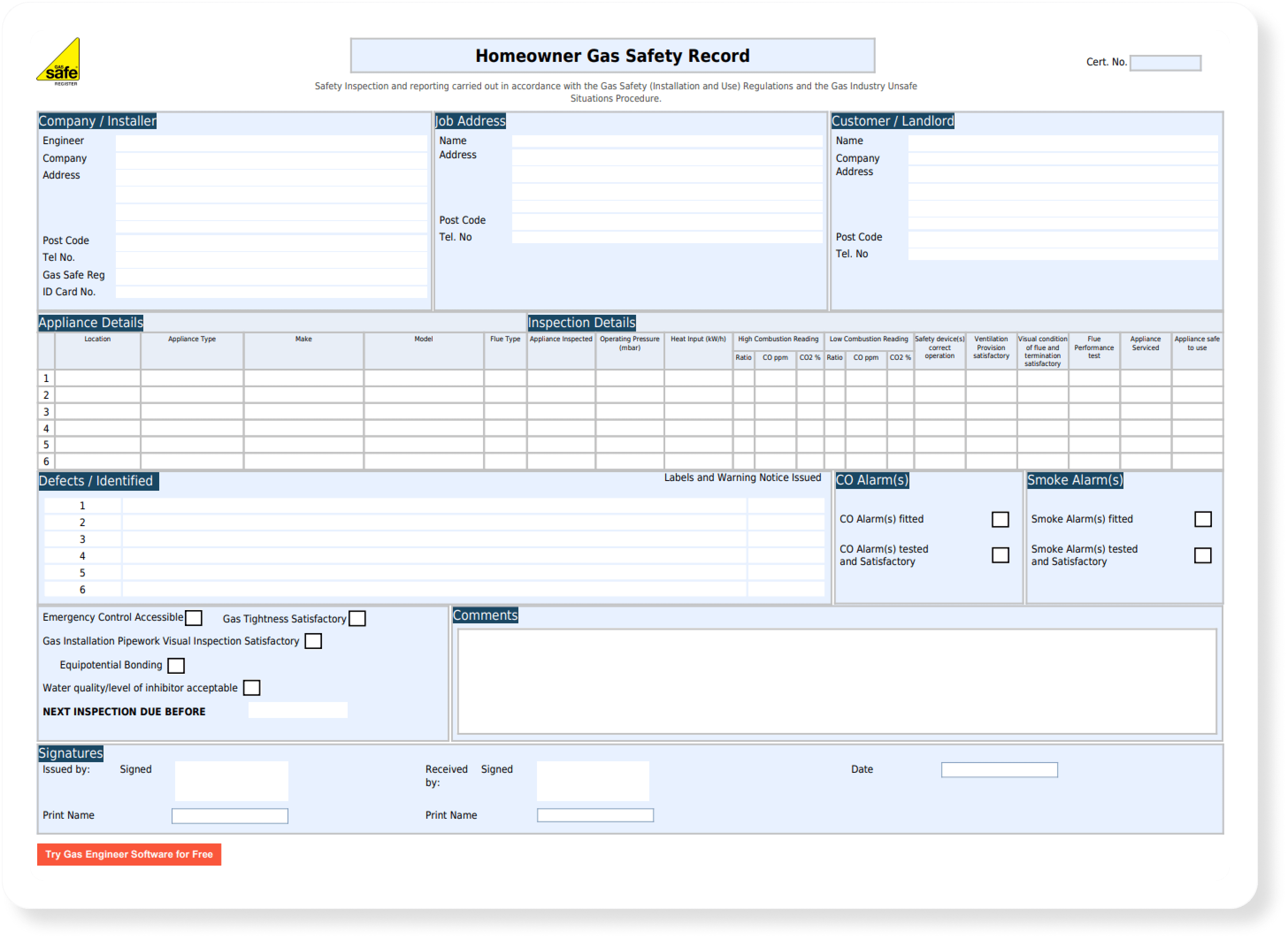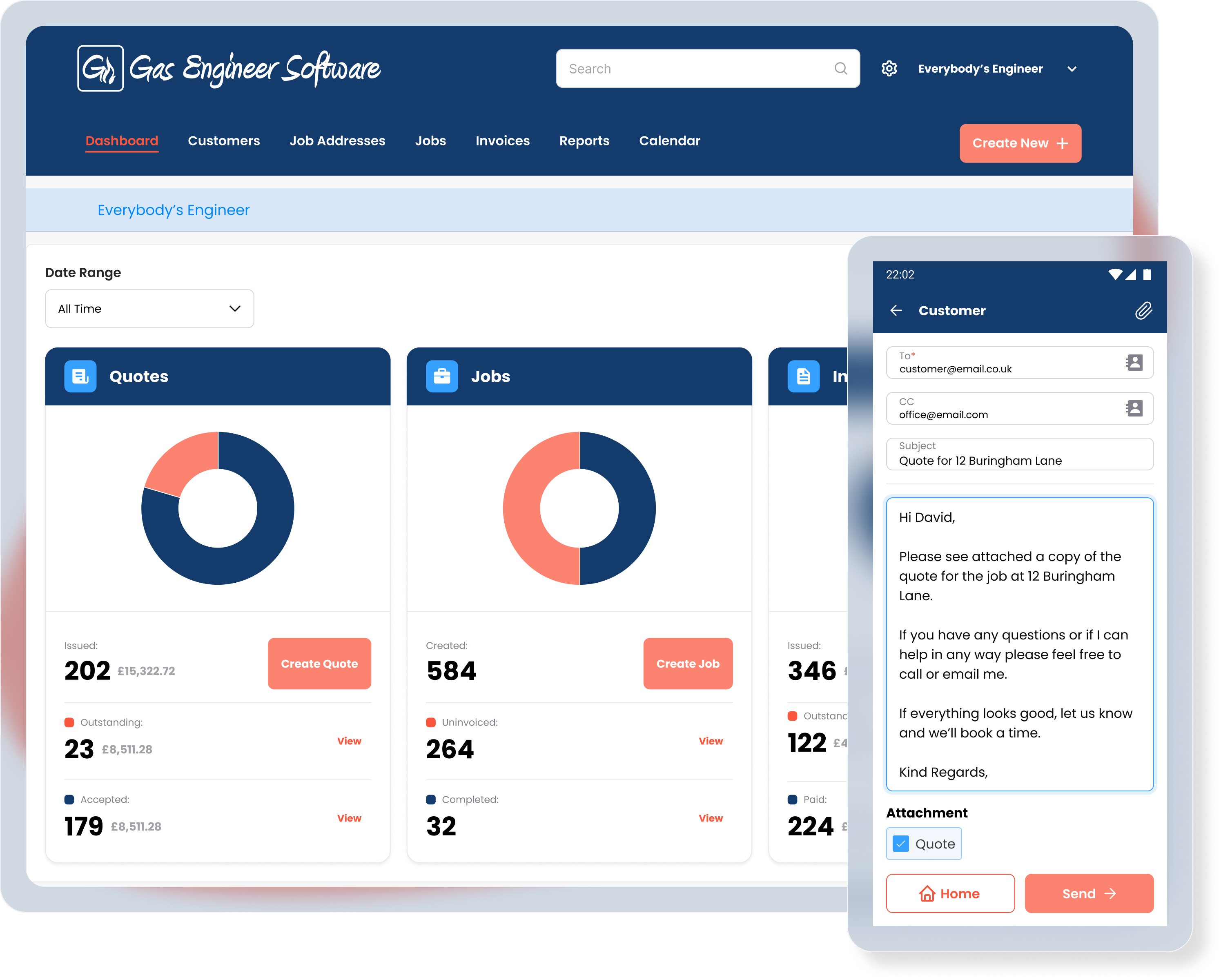The 7 Best Pricing Strategies For Heating & Plumbing Businesses
![[Featured Image] Pricing strategy](https://gasengineersoftware.co.uk/wp-content/uploads/2024/09/Featured-Image-Pricing-strategy.png)
For any trades business, pricing is foundational. It directly impacts how much money you earn, how many jobs you get, and how stressful it is to run your business.
So why does pricing strategy often fall to the wayside? It turns out that it’s all to easy with all the jobs, paperwork, and admin you need to get done to keep the business ticking. More often than not, though, a well-designed pricing is all that separates you from hitting your business goals.
But your prices aren’t just a calculation (or a guesstimate). It’s also a strategy where you take your key business numbers and figure out how to best use them. Do you want to drive growth? Widen profit margins? Or maybe venture into bigger jobs that need well-planned estimates?
In this blog, we’ll summarise all of the effective pricing strategies for your heating business and what they’re best for so you can quickly & easily find out which one(s) to use.
Hourly-rate pricing
- Most versatile pricing strategy. Best for jobs where the time required is uncertain and can vary widely.
Hourly-rate pricing is a simple yet extremely effective way to price your heating jobs.
The basic idea of hourly-rate pricing is to work out how much to charge for an hour of your time. This number should factor in all costs from overheads to labour and should be costed for billable hours to exclude holidays, sick days, driving, admin work, and so on.
With this number, you can then estimate the time it takes to complete a job and simply multiply the two. Remember to add on material costs that of course vary from job to job.
For example, if your hourly rate is £75, a job that takes 2.5 hours can be quoted at £187.5.
You can read our full guide on calculating your hourly rate here, which includes a free pricing calculator.
Just remember that hourly rates aren’t always the best for short jobs that take much less than an hour. Most heating businesses using hourly-rate pricing avoid this issue by adding a minimum charge (usually an hour’s labour) or by moving onto flat-rate pricing for small and predictable jobs such as gas safety checks.
Cost-plus pricing
- The best pricing strategy for keeping a consistent and care-free profit margin.
Cost plus pricing is another simple and effective way some heating businesses price their jobs.
This strategy involves taking all the associated costs with a job, tallying them up, and adding your profit margin on top.
For example, a new boiler installation job might have materials that add up to £1,650, labour costs of £750, and overheads of £170. Your total costs are £2,570 and, with a 20% profit margin, your quote would total £3,084.
Note that while adding up the cost of all the materials and overheads can be relatively simple, knowing how much to charge for your labour can be a bit more complex.
Competition-based pricing
- Good for staying competitive in the local market and avoiding being underpriced by competitors.
Competition-based pricing (also known as competitive pricing) involves looking at what other heating businesses in your local area are charging for their work and pricing at a point based on that figure.
For example, if a competitor is charging £80 for a gas safety check, you could charge something like £75 to attract more customers, or go higher and present yourself as a more premium service provider.
One of the goals of competition-based pricing is to ensure you never unknowingly lose out on jobs based on pricing.
Be careful of a race-to-the-bottom type scenario if you and your competitors are both trying top undercut each other, and keep a close eye on your costs so that you can maintain a healthy profit margin regardless of what your competitors are doing.
Tip: Keeping an eye on your competitors is also a great way to identify inefficiencies in your expenses or workflows. E.g. if they’re charging significantly less than you, is it because they’re making no money or because they’re more efficient?
Project-based pricing
- Best for straightforward, predictable jobs with a clearly defined scope.
Project-based pricing (also known as flat-rate pricing) is when you quote a fixed price for a complete job. This type of pricing is often appreciated by customers as it’s a more transparent pricing system that they don’t have to request custom quotes for.
However, since the price remains constant regardless of how long it takes to complete, project-based pricing is typically used for more predictable jobs like gas safety checks and even routine installations of new boilers.
It’s important when calculating flat prices to take into consideration all costs and potential delays to make sure you’re keeping a wide enough profit margin.
Promotional pricing
- Effective for attracting new customers or boosting sales during slower periods with limited-time discounts.
Promotional pricing is a strategy that involves offering discounts or promotions to customers. The aim can be to find new customers, pivot to new services, or find extra work during slow summers. For this reason, promotional prices are a temporary strategy and should complement another on this list.
Heating businesses often use promotional prices to offer discounts on installations, gas safety checks, and plumbing work. You could also get creative and offer a free yearly service for a new boiler installation, or create a discounted maintenance plan for landlords or homeowners that want a care-free but safe heating system.
When doing promotions, make sure you’re still able to stay profitable — or that the boost in new customers will cover any losses in the long run. In general, repeat business is much more profitable and therefore should be prioritised.
Market Penetration Pricing
- Good for quickly gaining market share or attracting new customers with lower initial prices.
Market penetration pricing is a strategy where you set lower-than-average prices to quickly gain a bunch of new customers. This strategy is mostly used by new businesses entering an already competitive market before switching to another pricing strategy when they have a decent sized customer base.
For example, if the average price for a gas safety check sits at around £70 in your area, you could put your prices at £50. You’ll often see brands pairing a market penetration pricing strategy with other aggressive marketing tactics like online advertisements.
Find out the average prices for common heating jobs broken down by UK region here.
Since keeping a wide enough profit margin is incredibly difficult while on a market penetration pricing strategy, this is often a temporary measure before gradually raising prices.
Premium & economy pricing
- Ideal for businesses that know their ideal customer and the type of work they want to do.
Premium and economy pricing are actually two separate strategies, albeit very similar. One involves setting higher prices to reflect a premium, high-quality service, while the other is setting lower, more budget-friendly prices.
Both should take into account your costs and desired income, but there’s a few key differences.
On a premium pricing model, you’ll be doing jobs with a wider profit margin. The downside is that to justify higher prices, you’ll need to offer a better service — which often takes more time.
Read more about justifying your costs here.
On the other hand, economy pricing attracts more customers, but you’ll be making less profit per job and rushing around slightly more.
There are other considerations too, such as whether you prefer doing work to your absolute highest level of craftsmanship, if you prefer a certain type of customer, as well as the type of demographic in your local area.
Two honourable mentions:
Value-based pricing
Value-based pricing is a strategy that focuses on setting prices based on the perceived value of your service to the customer, not solely the costs.
This type of pricing is commonly used for parts of the job such as rush-services or emergency plumbing callouts.
Dynamic Pricing
Dynamic pricing is a more flexible approach that involves changing prices based on market demand. For heating businesses, this often means increasing prices during winter, and decreasing them over the summer.
Dynamic pricing can be a good way to keep your schedule busy during the slow season, and is similar to promotional pricing in that regard. And, while it can help boost profit during the peak season, regular customers can feel like they’re getting cheated.
What is the most effective pricing strategy for a heating business?
Truth be told, there is no “best pricing strategy” for a heating business. It largely depends on your business, your market, and what your goals are.
We’ve summarised what each pricing strategy is best for, but for a better idea, think about these questions:
- Do you want to drive business growth, or do you want to maintain its current size?
- What kind of costs are you dealing with?
- How much profit do you want to make?
- How is your current pricing strategy working out?
- Is your schedule currently too busy?
How do you price heating & plumbing jobs?
No matter the strategy you choose, you’ll need a keen eye on your costs and an ideal profit margin. This process can get a bit tricky, especially with so many different moving parts to a business.
To make things easier, we’ve put together a guide on how to decide on good prices for your heating jobs. It even includes a free pricing calculator which you can download and fill out.
Next steps:
If you’ve been thinking about implementing software into your workflow to save time, here’s what you can do next:
- Visit our resources centre where you'll find more articles like this one and our free gas rate calculator.
- Start a free trial to see exactly how our software works for your business.
- Watch our video demo to get an idea of how our software works. You can also book a 1-on-1 session with our customer success team for a more personalised experience.
- Know an engineer who's still using paper? Help them and us out by sending our software their way!


